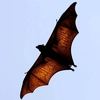TCP has a 32-bit sequence number field and 16-bit advertised window field. Assume that RTT is 512 (2 9) ms, transmission speed is 1 Gbps (2 30 bps) and each segment transmitted is 1B byte. Note that Since not two identical sequence numbers can be unacknowledged in the pipe, half of the sequence numbers can used (2 31). (a) How long does it take for the sequence numbers to warp around? 5 pts (b) Now, instead of sending 1 B segment, let's send a 16 B segment. How long does it take for the sequence numbers to warp around? 5 pts (c) What is the drawback in using large segments? 5 pts (d) What is the maximum achievable throughput?
Answers (1)
Know the Answer?
Not Sure About the Answer?
Find an answer to your question 👍 “TCP has a 32-bit sequence number field and 16-bit advertised window field. Assume that RTT is 512 (2 9) ms, transmission speed is 1 Gbps (2 ...” in 📗 Computers & Technology if the answers seem to be not correct or there’s no answer. Try a smart search to find answers to similar questions.
Search for Other Answers
You Might be Interested in
4. Software, biotechnology, and information technology hardware industries are examples of the type of knowledge industry A. manages and conveys information. B. has information as its goal. C. creates and conveys information. D.
Answers (1)
The earliest known fossils are from the Achaean eon of the geologic time scale. True False
Answers (1)
C + + code - - Factorial Recursion Write code to complete PrintFactorial () 's recursive case. Sample output if userVal is 5: 5!
Answers (1)
Use an IF function in cell H18 to calculate the commission rate for the total sale for order 1. The commission rate is 2% for all sales that total more than $10 and 1% for all sales that total more than $5.
Answers (1)
How many attendees are at a convention if 150 of the attendees are neither female nor students, one-sixth of the attendees are female students, two-thirds of the attendees are female, and one-third of the attendees are students?
Answers (1)
New Questions in Computers & Technology
What must you consider when determining the efficiency of an algorithm? Select two choices. a. The language in which the program is written b. The amount of resources, such as storage, required c. The number of characters used to write the program d.
Answers (1)
How to use translate on a website?
Answers (1)
When we consider data quality, what are the differences among validity, reliability, and representativeness? How can you know the data have high levels of these characteristics?
Answers (1)
You are creating a budget for your new business. What should you include? A. All income and expenses. B. Fixed expenses but not income. C. Income but not variable expenses. D. Fixed and variable expenses but not taxes.
Answers (1)
This resume format focuses on the tasks or skills that an applicant can perform is what? A chronological B functional C electronic or D scannable
Answers (1)

